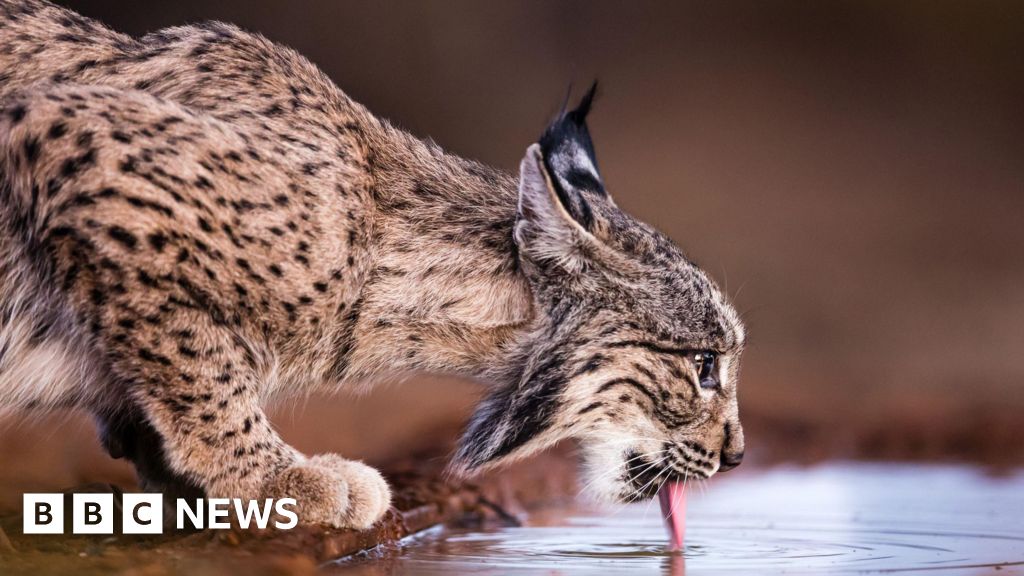World
One of world’s rarest cats no longer endangered – conservation agency – BBC News

Image source, Getty Images
- Author, Malu Cursino
- Role, BBC News
-
One of the world’s rarest cats, the Iberian lynx, is no longer classed as endangered, according to a report by the International Union for Conservation of Nature (IUCN).
On Thursday the IUCN, which categorises species according to the level of risk they face in a “red list”, bumped the Iberian lynx from “endangered” to “vulnerable” after a significant surge in numbers.
Its population grew from 62 mature individuals in 2001 to 648 in 2022. While young and mature lynx combined now have an estimated population of more than 2,000, the IUCN reports.
As the name suggests, the wild cat species calls the Iberian region – Spain and Portugal – home.
The wild cat used to be common across the whole of the Iberian Peninsula, but from the 1960s its numbers plummeted.
Habitat loss, poaching and road accidents all helped to push the species to the brink of extinction.
Now, the cat is coming back.
The increase is largely thanks to conservation efforts that have focused on increasing the abundance of its main food source – the also endangered wild rabbit, known as European rabbit.
Programmes to free hundreds of captive lynxes and restoring scrublands and forests have also played an important role in ensuring the lynx is no longer endangered.
Francisco Javier Salcedo Ortiz, a coordinator responsible for leading the conservation action, described it as the “greatest recovery of a cat species ever achieved through conservation”.
Mr Ortiz said there was still “a lot of work to do” to ensure the animals survive and the species can recover.
“Looking ahead, there are plans to reintroduce the Iberian lynx to new sites in central and northern Spain,” he added.
The area the species occupies is now much larger, according to IUCN, jumping from 449 sq km (173 sq miles) in 2005 to 3,320 sq km today.
But the conservation agency has warned against complacency, as it said the gains could be reversed. Threats include diseases from domestic cats and the wild rabbits it feeds on, as well as poaching and road kill.
Established in 1964, the IUCN’s red list of threatened species has evolved to become the world’s most comprehensive information source on the global conservation status of animal, fungi and plant species.
Image source, Getty Images







:max_bytes(150000):strip_icc()/roundup-writereditor-loved-deals-tout-f5de51f85de145b2b1eb99cdb7b6cb84.jpg)


